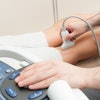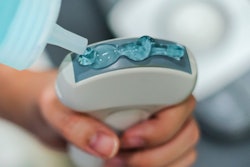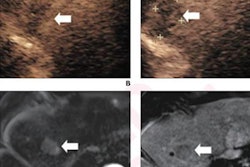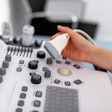
SAN DIEGO - The jury is out when it comes to the use of contrast-enhanced ultrasound (CEUS), but case reports presented March 14 at the 2022 American Institute of Ultrasound in Medicine (AIUM) annual meeting show pediatric patients can benefit.
In her presentation, Dr. Susan Back from Children's Hospital of Philadelphia presented case studies of CEUS in action for diagnosing pediatric patients of various ages, from young children to teenage athletes.
"Ultrasound, I think, is a first option always for pediatrics in almost everything," Back told AuntMinnie.com. "If you have a clinician who has a question that can be answered quickly and easily by ultrasound, it saves the child from having to undergo sedation or a radiation-based exam."
Researchers have touted CEUS for using no radiation and providing real-time imaging as a vascular tracer by using gas-filled microbubbles. Previous studies suggest that CEUS outperforms standard ultrasound and color Doppler in some imaging areas.
However, a debate on the use of contrast agents persists among medical imagers. Hindrances to its use noted by experts include workflow challenges, a "black box" warning issued by the U.S. Food and Drug Administration (FDA), and requiring sonographers to learn new skills.
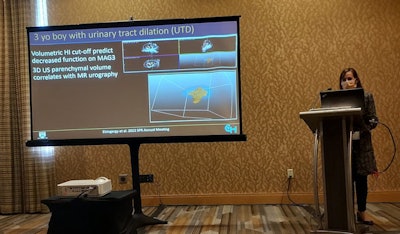 Dr. Susan Back talks about new imaging techniques in pediatric ultrasound at the American Institute of Ultrasound in Medicine (AIUM) annual meeting. She said while contrast-enhanced ultrasound shows promise in pediatric imaging, more evidence-based research needs to be presented for wider use.
Dr. Susan Back talks about new imaging techniques in pediatric ultrasound at the American Institute of Ultrasound in Medicine (AIUM) annual meeting. She said while contrast-enhanced ultrasound shows promise in pediatric imaging, more evidence-based research needs to be presented for wider use.Several societies over the years have urged the FDA to remove their warning, including AIUM, the World Federation of Ultrasound in Medicine and Biology, and the Society of Radiologists in Ultrasound, among others.
Back said what's also needed is for more researchers to come forward with their findings.
"The more evidence-based use we have, the easier it will be for those who those challenges," she said. "For those of us who have the ability to use off-label contrast use, [we need to] be able to talk with our clinical partners to understand what questions need to be answered."
One case report Back presented showed scans of a one-year-old boy who had arm swelling. A contrast agent was injected that showed no flow around a catheter that was also used. This gave clinicians confidence to say that there was gland thrombus around the catheter, which guided treatment.
Another case report showed a 15-year-old football player who presented with abdominal trauma after suffering an injury. Ultrasound showed a hematoma as well as renal extravasation. CEUS was used for surveillance since the teen's hemoglobin was stabilizing. Clinicians determined he did not need embolization or surgery, and CEUS later showed internal healing.
A third report Back presented showed infantile hemangioma in a 6-week-old girl with the use of high-frequency ultrasound and color Doppler. Liver ultrasound was also used, with MRI further serving to make sure deeper hemangiomas were not present. CEUS also proved findings were consistent with infantile hemangioma. Back said the girl returns periodically for evaluation.
Back said CEUS can help where other imaging modalities such as CT or MRI cannot with pediatric patients, as well as save on expenses for families. She added that contrast agents have a variety of uses clinically.
"There are a lot of ways we use contrast and a lot of promise," Back told AuntMinnie.com. "Everything that's new takes time for acceptance, but if we can improve the value and benefit to the patient, then that should be our priority."




